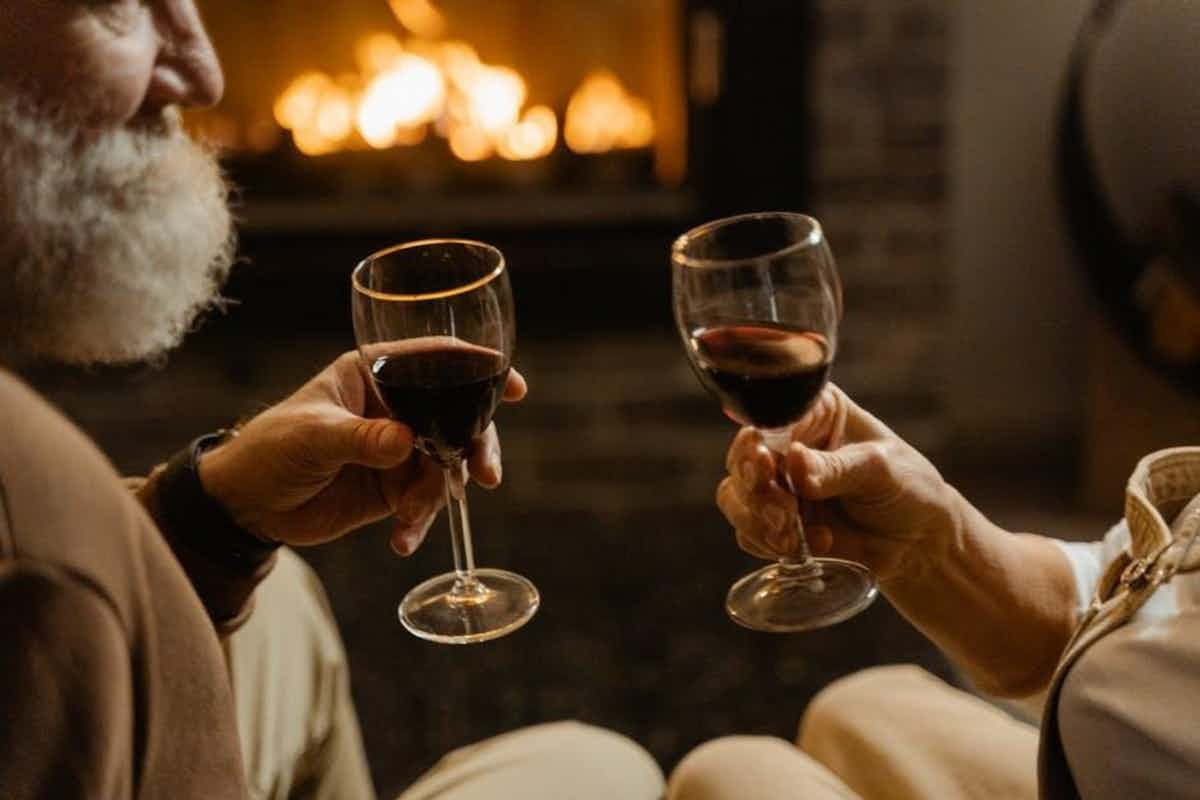Wine pairing doesn’t have to be intimidating. Whether you’re hosting a dinner party or ordering a bottle to enjoy with takeout, the right wine can elevate any meal.
Thanks to the convenience of online shopping, access to quality wines has never been easier, but selecting the perfect bottle still requires some know-how.
In this guide, we demystify pairing wine with food when buying online. From decoding labels to matching varieties with dishes, we’ll walk you through everything you need to know to choose with confidence. You’ll also discover how to avoid common mistakes and get tips on building your own pairing collection.
With help from boutique wineries like Levo Vineyard, offering expressive Rhône varieties and curated wine tasting experiences, beginners can feel like sommeliers. Let’s raise a glass to smarter wine shopping and delicious meals.
Why Wine Pairing Matters
Wine pairing is more than a tradition—it’s a sensory experience. A good pairing enhances both the wine’s and the food’s flavor, creating balance and harmony on your palate. For example, a high-acid white wine like Sauvignon Blanc can brighten a citrusy salad, while a robust Syrah deepens the savory richness of a grilled steak. When the match is correct, wine can highlight subtle notes in your meal or soften bold flavors for a more rounded experience.
When shopping online, you may not have the benefit of a sommelier to guide you. That’s why understanding basic pairing principles can empower your decision-making. Think of it as flavor matchmaking: you’re looking for wines that complement or contrast your dish in a delicious way.
Choosing the right wine can also enhance the occasion. Whether you’re celebrating, relaxing, or exploring new cuisines, wine helps set the tone. Online wine retailers often offer pairing notes, making choosing the right bottle for your plans easier.
Levo Vineyard, for instance, curates Rhône-inspired wines that are bold, expressive, and food-friendly—perfect for pairing with everyday meals and upscale fare. Their micro-lot selections are designed with craftsmanship and pairing potential in mind.
Understanding why wine pairing matters can help you shop smarter and enjoy your wine to the fullest. Once you know what you’re looking for, browsing wines online becomes less overwhelming and much more fun.
Basic Wine Pairing Principles
Pairing wine successfully starts with a few core principles that can guide you through most meals. Here’s how to think about matching your wine to your dish:
- Match Intensity – Pair delicate foods with lighter wines and robust dishes with full-bodied wines. For example, a grilled sea bass goes well with a light Vermentino, while a braised lamb shank holds up better with a full-bodied Syrah.
- Consider Acidity – Wines with higher acidity, like a crisp Grenache Blanc—work well with foods with similar brightness or need a counterbalance, such as salads, seafood, or dishes with citrus or vinegar-based sauces.
- Balance Sweetness – Pair sweet dishes with equally or slightly sweeter wines to avoid making the wine taste bitter. A spicy curry might pair beautifully with a lightly sweet wine like an off-dry Rosé.
- Complement or Contrast Flavors – You can pair flavors by similarity (like a mushroom risotto with an earthy Grenache) or contrast (like pairing a fatty cheese plate with a high-acid white to cut through the richness).
- Factor in Tannins – Tannins in red wine interact with proteins and fats. A tannic red like Petite Sirah becomes smoother with rich, fatty foods like short ribs or aged cheeses.
Approach wine pairing with confidence once you’ve internalized these rules. Levo Vineyard’s small-batch wines enhance food, making an ideal selection for curious buyers. Their online descriptions include pairing notes, helping you connect flavor profiles with the right dish. With practice, you’ll be pairing like a pro.

How to Choose Wine Online Without Tasting It
Choosing wine online without tasting it first can be tricky, but it’s easier with the right approach. Here’s how to navigate online wine stores with confidence:
- Read the Tasting Notes. Most online retailers provide descriptions that outline flavor profiles. Look for keywords like “fruit-forward,” “earthy,” “oaky,” or “mineral-driven” to help you imagine how the wine might taste.
- Check the Varietal and Region. Familiarize yourself with common characteristics of popular varietals and where they grow best. For example, Rhône varietals like Syrah and Grenache from Paso Robles are often bold, juicy, and well-suited for hearty fare.
- Look at Food Pairing Suggestions. Many sites include pairing notes or meal ideas. Use these to match your planned menu or discover new pairing possibilities.
- Read Reviews and Ratings. Other customers’ feedback can provide insight into flavor, quality, and versatility. Remember that taste is subjective, so look for patterns rather than outliers.
- Choose Trusted Producers. Select wines from reputable wineries known for consistency and quality. Levo Vineyard, for instance, is celebrated for expressive Rhône varietals that are consistently well-reviewed.
- Buy from Wineries with Curation Wineries that offer curated tasting flights, like Levo Vineyard, often group wines by intensity or food compatibility, making it easier to select the right match.
With these tips, you can shop confidently for wine online, without ever popping the cork first.
Mistakes to Avoid When Pairing Wine
Even seasoned wine lovers can stumble when it comes to food pairing. Here are some common mistakes—and how to avoid them:
- Overpowering the Food: Choosing a wine that’s too strong for the dish can overwhelm it. Delicate dishes need subtle wines, while bold recipes require equally assertive wines.
- Ignoring Sauce and Seasoning. The sauce, not the main ingredient, should often guide your wine pairing. A creamy Alfredo sauce pairs differently from a tomato-based marinara.
- Overlooking Acidity and Sweetness. Serving a dry wine with sweet food can make the wine taste bitter. Similarly, acidic food needs a wine with matching acidity to avoid tasting flat.
- Forgetting About Tannins Tannic wines need fat or protein to soften their edges. Avoid pairing them with light or acidic dishes.
- Assuming All Reds Go with Red Meat. While this is a good guideline, it’s not a rule. Some red wines, like Grenache, are light enough to pair with poultry or grilled vegetables.
Avoiding these pitfalls helps ensure your meal and wine work in harmony. When buying wine online, trust wineries like Levo Vineyard that offer pairing suggestions with every bottle to help you avoid guesswork.
Wine Pairing Examples for Popular Dishes
Here are some easy wine pairings to try at home:
- Grilled Steak – Try a bold Syrah or Petite Sirah to match the savory richness of the meat.
- Roasted Chicken – Pair with Grenache or a Rhône blend with medium body and light spice.
- Seafood Pasta – A Grenache Blanc or Vermentino adds freshness and balance.
- Spicy Thai Curry – An off-dry Rosé or fruity white wine helps soften the heat.
- Aged Cheese Plate – Choose a high-acid red like Syrah or a robust white to cut through the fat.
- Chocolate Dessert – Pair with a sweet red or port-style wine with dark fruit notes.
Levo Vineyard’s Rhône-inspired wines pair beautifully with a wide variety of dishes. Their website offers pairing suggestions to help guide your choices based on the bottle.
Explore Levo Vineyard Wines for Pairing
Levo Vineyard, located in Paso Robles’ Tin City, is known for its small-batch Rhône varietals mad with a blend of creativity, authenticity, and terroir expression. Whether pairing wine with dinner or building a collection, Levo offers unique bottles to enhance food and elevate your wine experience.
Their portfolio includes:
- Syrah and Petite Sirah pair perfectly with grilled meats and bold sauces.
- Grenache-based blends are ideal for poultry and earthy vegetables.
- Grenache Blanc and other whites that complement seafood and light fare.
Levo also hosts wine tastings and curated events where guests can learn about food pairing directly from the winemaking team.


Recent Comments